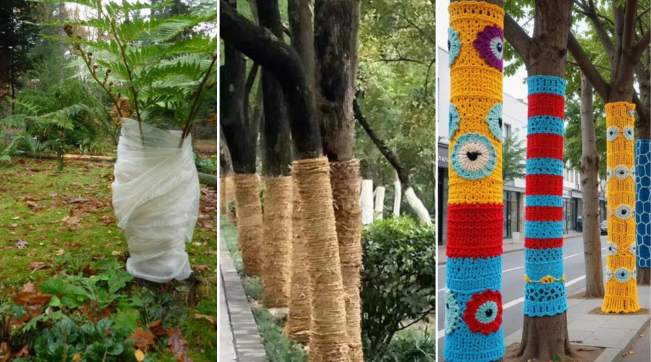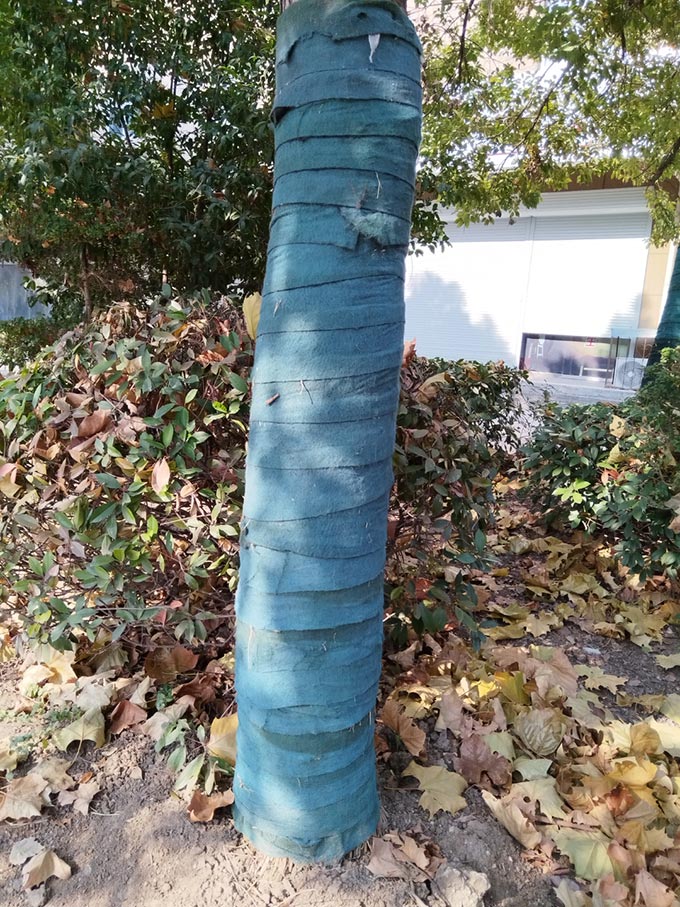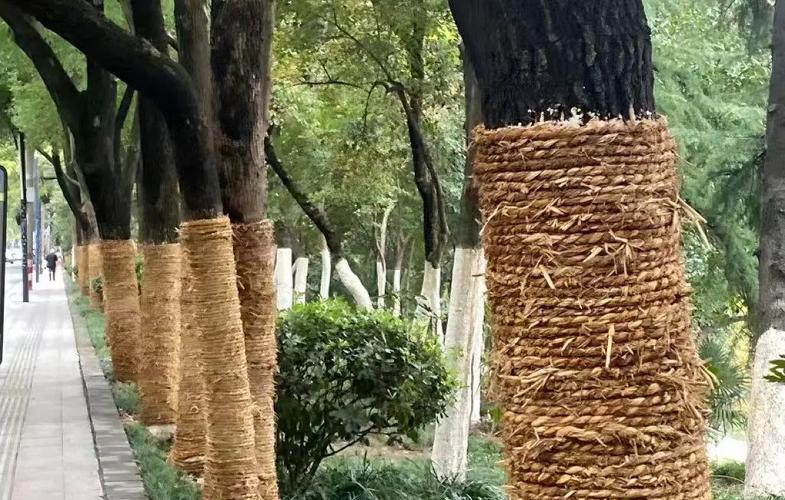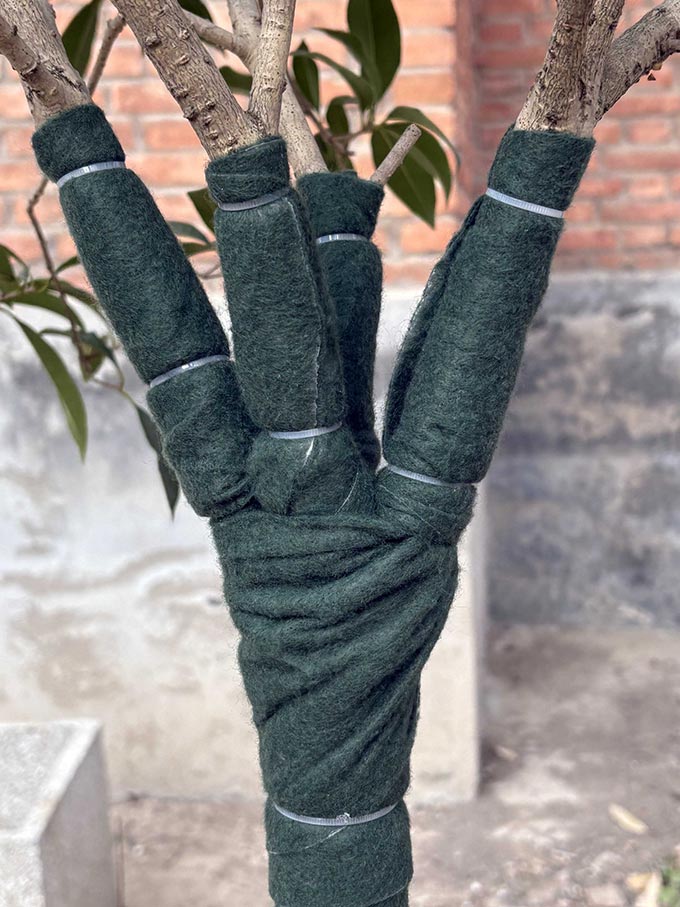Why You Should Wrap Tree Trunks With Blankets in Winter
Winter shows up with cold wind, dry air, and those weird days where the sun is out for five minutes and gone again. And while we’re all busy wrapping gifts, there’s something else in the yard that kinda needs wrapping too—your tree trunks.
I didn’t take this seriously until my young maple got a huge brown patch one winter. I thought it was “just winter stuff,” but nope… it was sunscald. After that, I became the person who wraps trees with old blankets like they’re heading out for school on a cold morning.

Why Wrapping Tree Trunks With Old Blankets Is Actually a Genius Winter Trick
Here’s why this simple trick works way better than you’d think.
1. It Helps Stop Sunscald (The Winter Sunburn Trees Hate)
Young trees are like teenagers—dramatic and easily confused.
One warm sunny afternoon in winter can “wake up” the cells under the bark. Then, when the temperature suddenly drops at night, those warm active cells freeze and die. The bark turns dark, sunken, cracked… and sometimes falls off in flakes. That’s sunscald.
Wrapping the trunk with an old blanket keeps the bark temperature more stable.
No big ups and downs. No “winter sunburn.” No sad tree drama in spring.
2. It Keeps Pests From Chewing or Hiding Inside

Honestly, winter pests are sneaky. Squirrels chew the bark for fun. Rabbits think tree bark is a free salad bar. And wood-boring insects are always looking for a soft place to nap and eat.
A simple blanket acts like:
- a wall for pests
- a smell barrier
- a “sorry, not today” message for animals looking for a snack
It doesn’t stop every single pest in the world, but it definitely cuts down a lot of the trouble—especially for young thin-bark trees.
3. It Shields Trees From Harsh Wind & Frost Damage

Cold wind in winter dries out bark the same way it dries out your lips.
And young trees? They dry out fast.
Blanket wrapping helps by:
- holding in warmth
- blocking strong winter wind
- reducing bark cracking
- keeping the trunk from freezing and thawing too quickly
If you grow thin-bark trees like maple, crabapple, ash, linden, or honeylocust, trust me—they need this protection way more than you think.
4. It Helps Prevent Frost Cracks (Those Long Vertical “Wounds”)
Frost cracks happen when the trunk warms up during the day then freezes fast at night. The bark expands → contracts → splits.
It can look like someone took a knife and sliced straight down the trunk.
Blankets keep the temperature steady so the trunk doesn’t play this daily “expand and shrink” game. The cracks are not always deadly, but they let disease and moisture inside… and once a crack starts, it usually comes back every winter.
Wrapping keeps things calm and stable.
5. It’s Super Easy—No Fancy Gear Needed
Forget expensive burlap or those weird plastic tree wraps that basically suffocate the trunk.
You can literally grab:
- an old fleece blanket
- an old flannel sheet
- a cotton throw
- a soft scarf (I used one once when I ran out of blankets… it worked)
Just don’t use anything too thick and plastic-like. Trees need to breathe.
If your tree is small or delicate, wrap gently so the trunk isn’t squeezed.
If it’s taller, use three wooden stakes to make a little “tent” and drape the blanket over it like a mini shade house.
6. It Helps Reduce Water Loss in Young Trees

Winter dryness makes young bark lose moisture faster.
A blanket actually slows down evaporation by blocking cold wind and keeping the bark slightly warmer.
The result? The trunk doesn’t dry out like paper.
This is especially helpful in:
- high elevation areas
- windy yards
- places with long freeze-thaw cycles
It’s a tiny step that helps a lot with winter survival.
7. It Even Protects Against Rodent Gnawing at Ground Level
Some animals (looking at you, mice and voles) chew the lower trunk under the snow line.
Wrapping the base of the trunk adds an extra barrier that most rodents don’t bother chewing through.
Pair it with a winter mulch layer and your young trees are basically in a safe little winter bunker.
8. It Keeps Surrounding Soil More Stable (small extra point I added)
Blankets hold a bit of warmth and block harsh wind across the base of the tree.
That helps prevent soil from freezing rock-solid too fast, which makes root stress lower.
It’s not a magic heating system, but it does add a tiny buffer that roots appreciate.
How to Wrap a Tree the Right Way (Quick Steps)

- Start in late fall before the hard frost hits.
- Use a soft, breathable blanket—not plastic.
- Wrap loosely from the base upward.
- Overlap each layer so cold air can’t sneak in.
- Tie gently with twine (not tight).
- Remove the blanket in early spring once freezing nights fade.
Extra Tips to Remember
- Wrap between Thanksgiving and early spring.
- Check every few weeks for pests hiding under the fabric.
- Don’t wrap too tight—trees also need oxygen and room to grow.
- Keep caring for the tree normally; wrapping is support, not a shortcut.
- Mulch around the base for extra winter insulation.



